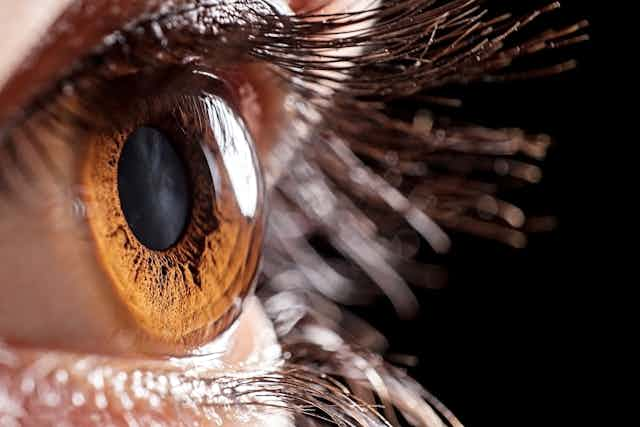Every year, many innocent people go to prison. Civil Liberties Australia estimates suggest that 7% of the country’s prisoners are innocent. In the US, estimates for the number of cases that would support a claim of wrongful conviction range between 0.02% and 11.6%. Other research suggests that about 10,000 people in the US are wrongfully convicted every year.
It is also estimated that over 70% of wrongful convictions in the US are related to an eyewitness misidentifying the wrong person. Research shows that it’s very difficult to recognise someone you have only seen briefly before, particularly if you were afraid during the crime or during the identification procedure.
We’re interested in whether psychological research can help improve the reliability of identification procedures. It’s early days, but our latest study suggests that measuring a witness’s pupil size during an identification procedure may give some indication of how strong their recognition really is as they look at each face.
Your pupils don’t just change size in response to light levels. For instance, they get larger when you look at someone you find attractive, or when you have to complete a difficult mathematical task. Pupils are also larger when people remember seeing something they have seen before compared to when looking at something they have never seen before. This means we can use measurements of pupil size (pupillometry) to infer things about what is going on in the brain as people perform tasks.
For our research, over three experiments, we showed 131 volunteers a video of a simulated crime, followed by a lineup of possible suspects. We found that the pupils of those volunteers who correctly identified the criminal became up to 32% larger when they looked at them compared to when they looked at the rest of the lineup. But those participants who identified the wrong person or didn’t choose anyone showed no changes in pupil size. Pupil size also didn’t change if the criminal wasn’t actually in the lineup, no matter what the volunteers decided.
Because pupil size changed only when volunteers correctly identified the criminal, this suggests the change could be a measure of how strong their recognition really was. It wasn’t just the result of them believing they had identified the right person.
This could be important because the strength of identification evidence can determine whether or not it is used in court. Judges are required to assess how strong the evidence is before deciding whether a jury should hear about it. The evidence can be considered weak if the witness only saw the suspect for a short time, in poor conditions (such as poor lighting) or if the witness knew the suspect.

Identification can also be affected by various factors including stress, how long ago the incident took place, and the tendency for people to better remember faces of their own race. This helps explain why identification can be a flawed reason for a conviction. For example, in 2009 in the UK, DNA evidence was used to quash the robbery conviction of William Mills, which the presiding judge said had been based on “eyewitness identification alone”.
Unfortunately, it seems unlikely that courts’ reliance on eyewitness identification evidence is going to change any time soon. But our research suggests pupillometry might provide a better way to measure the strength of this evidence, and potentially prevent weak identifications from being used to incorrectly convict people.
Predictions may be possible
We have also looked at whether it may be possible to predict whether or not a participant is likely to recognise a criminal or not by looking at the size of their pupils. Our initial (unpublished) data suggests this may be the case, especially if witnesses rate their memory of the criminal as very strong.
From our sample of 45 participants, those who said they remembered the criminal and correctly identified him had dramatic pupil size changes that reflected this strong memory. But those that claimed to remember him well but did not correctly identify him had no pupil changes at all. This suggested that their belief in their strong memory was misplaced.
Meanwhile, some participants who claimed they were guessing as they failed to make an identification still had pupil size changes when looking at the criminal. This suggested either that their strength of recognition was too low for them to be conscious of it, or that they did not make an identification for other reasons.
More research is needed to determine whether pupillometry could be used to support or augment current ways of assessing the strength of identification evidence. But we would argue that justice systems don’t pay enough attention to neuroscientific research on memory. Perhaps pupillometry could provide a way of uniting psychological expertise and the law more closely when it comes to assessing the reliability of eyewitness identification.

